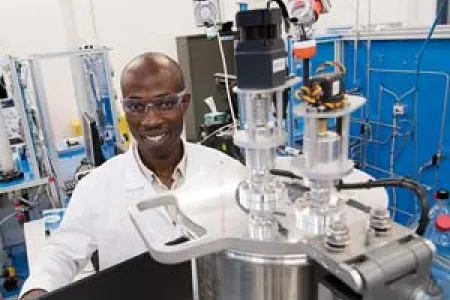Research on solar provides key to energy crisis
Research into an alternative energy source to help address the world’s imminent energy crisis has been the focus for a Charles Darwin University PhD graduand.
Originally from Ghana, Dr David Ompong has been working towards improving the design of solar panels to optimise their performance.
“It is estimated that within the next 40 to 60 years the world will run into an energy crisis,” Dr Ompong said. “We also have a moral obligation to reduce the use of fossil fuels due to their impact on the environment.”
The School of Engineering and Information Technology PhD candidate’s research, titled “Designing thin film solar cells for optimum photovoltaic performance”, assessed the singlet versus triplet exciton diffusion in organic solar cells.
“In recent years, there has been increased interest in organic and hybrid solar cells (OHSCs) because they offer a wide range of benefits such as integration of the solar cells into buildings, dresses, and other devices like computers and mobile phones,” Dr Ompong said.
“OHSCs are also low cost, light weight, mechanically flexible and perhaps most important of all, they have solution processed fabrication techniques so far less energy is spent in making the solar cells.”
He said the problems with OHSCs were low power conversion efficiency and rapid degradation of the organic components.
“The challenge is how to make solar cells more efficient and affordable. I wanted to help find ways to increase the power conversion efficiency of these solar cells.”
As part of his research Dr Ompong created a theoretical model to assist with extracting the maximum amount of energy from organic solar cells.
“I found that two charge-generating species (singlet and triplet excitons) in OHSCs have comparable diffusion lengths and that by using the Optical Admittance Analysis Method it is possible to obtain the optimum thickness that will produce the maximum photocurrent in the solar cells,” he said.
“By optimising the thickness of the active layers, an increase of two to six per cent in power conversion efficiency could be achieved.”
Dr Ompong is a lecturer at the School of Engineering and is continuing his research into the efficiency of OHSCs. He will graduate with a PhD during CDU’s graduation ceremonies on Friday.
